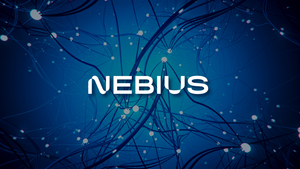NASA has finally made its choice for the stuffed moon mascot that will fly aboard its new up and coming Artemis mission, continuing a cherished spaceflight tradition. Each mission has carried a small toy or plush to act as its new zero gravity indicator, which goes to float free and mark the moment of weightlessness. This time, a new character will be making history.
This new winning design, created by Arianna Robins of Rockledge, Florida, is a colorful dinosaur named Terra the Titanosaurus. This creative creature’s bold red body, accented with blue spots and playful accessories, stood out among the many submissions that NASA had been proved to receive from the many young and both extremely talented designers, across the country. With its friendly and yet very welcoming and comforting appearance and strong stance, Terra represents both imagination and strong resilience. NASA officials explained that Terra the Titanosaurus was chosen because it captures the spirit of Artemis, which is to be constantly pushing boundaries, encouraging curiosity, and connecting people who are back on Earth, to the adventure of complex space exploration. It was stated that “We wanted a moon mascot that represents strength and joy at the same time, and one that speaks to the next generation of explorers,” a spokesperson said. “This design balances whimsy with purpose, reminding us that spaceflight is both serious science and a celebration of human creativity.”
The dinosaur’s role on the newfound mission, will be simple yet also symbolic. As the spacecraft reaches it's orbit, the plush will float freely, ultimately going to provide a very clear visible signal that weightlessness has finally begun. For the astronauts and viewers alike, this exciting moment can transforms a technical milestone into something relatable and also very inspiring. Children that are watching from Earth will see not just a simple cute dinosaur toy in space, but also a new character that is born from imagination that is riding along with real astronauts in space! The significance goes deeper than normal and expected tradition. Stuffed animals on spacecraft serve as outreach tools, bridging the gap between highly technical missions and the public’s sense of wonder as we know it. Terra’s unique selection reflects NASA’s proud and strong commitment to making space exploration come to feel accessible to everyone. Just as the Artemis program aims to inspire new generations, this small passenger embodies the belief that curiosity and creativity are as important as rockets and their new instruments alike. The contests that were what came to lead to the dinosaur’s selection was itself an exercise in engagements. Students were carefully asked to envision a design that they could see themselves traveling into space, blending fun, with extremely technical function. The results poured in, as these creatures of all shapes and colors, each carrying the imagination of its unique creator. NASA’s choice signals to every participant, that their ideas matter, that, science and art can coexist, and that even the wildest dreams can find a place in exploration.
In many newfound ways, the dinosaur goes to importantly represents the bridge between past and future. Dinosaurs themselves are symbols of ancient strength and resilience, survivors whose fossils teach us, about Earth’s extremely complex and nuanced history. To carry such a figure, with such a deep meaning and purpose, into space is to connect that deep past, with the bright future of interplanetary travel. It’s also an extremely important reminder that exploration isn’t just something that is limited to time or place, but it’s a continuous human drive. The new and typically loved Artemis program, which seeks to return astronauts to the Moon and eventually prepare for journeys to Mars, and even more, is about more than building just the rockets that we are shown today. It is also simply about the act of inspiring confidence that humanity can dream big again and again. A small plush and cute dinosaur toy may go to seem insignificant compared to towering launch vehicles, or advanced lunar habitats, but it plays a unique and extremely powerful role, which is going to ground those big ambitions in a story that people of all ages can connect to. These unique symbols matter in space exploration, as we can say just as Apollo astronauts left footprints and flags on the lunar surfaces they visited, the artifacts we bring aboard our spacecraft tell a story about what humanity values. Choosing a funny and whimsical companion that was also designed by a child says that imagination is not just welcome but it is also essential. It comes to calculatedly place the voices of the young, which are those who will, one day inherit these missions, which will ultimately be at the center of the narrative.
The dinosaur will also go to act as a global and powerful ambassador for STEM engagements alike. Teachers and also parents can come to point to it as proof that sciences and creativity equally should belong together. Students may also desire to follow its journey, imagining, themselves, friends, and family contributing to future missions not just as engineers or scientists but also as storytellers, artists, and dreamers, therefore, the lesson is clear: exploration thrives on diversity of thought.
NASA’s extremely positive, and also unique, choice also reinforces the idea that space travel is for definitely in today's day in age for everyone. Not every child will grow up to design spacecraft, but it is true that every child can definitely dream. Seeing a toy designed by one of their peers orbiting the Moon will come to tell young audiences alike, that their ideas are valued and that space is open to them too. It’s a democratization of inspirations uniting, turning a high tech mission into something that kids can feel personally connected to. Beyond its immense educational value, the dinosaur comes to carry an emotional resonance, as space is very vast, cold, and unforgiving, yet, the presence of a colorful toy softens it, reminding us of humanity’s warmth. It finally comes to suggest to audience members that even in the harshest environments, there is room for playfulness and wonders. In doing so, it strongly goes to reflects the balance that defines exploration: courage paired with curiosity, seriousness paired with joy.
When the spacecraft finally goes to launch, all of the eyes will be on the engines and their trajectories, but many will also be watching for the small moment when the plush begins to drift. Such a simple act, will symbolize more than microgravity, it will symbolize the lifting of imagination and its ultimate abilities, the proof that creativity can fly alongside science. It will be what ultimately reminds us that the journey outwards is also a journey inward, going toward the heart of what makes us explorers.
NASA has a long time extremely important tradition of sending small symbols into space, each, telling its own story, this dinosaur continues that legacy, adding a new chapter about our youth, imagination, and the power of our ability to design. Its presence will not only affect the trajectory of the spacecraft and the overall mission, but it will affect the trajectory of countless young minds watching from the Earth.
In the end, this extremely small passenger is more than just a cute and small toy, its more important, it is a declaration that exploration is not only about technology and achievement but also about meaning and connection. It tells us that in reaching for the Moon and Mars, we carry with us not just their tools and experiments, but also the creativity that defines our humanity. As the mission begins to finally unfold, the dinosaur will float weightless, as a tiny figure against the backdrop of the cosmos. And in that ultimate image, we will see, not only the future of spaceflight but, also the enduring truth that imagination belongs wherever humanity dares to go.
Media Contact
Company Name: Vocal.Media
Contact Person: James K Meyer
Email: Send Email
Country: United States
Website: https://vocal.media






